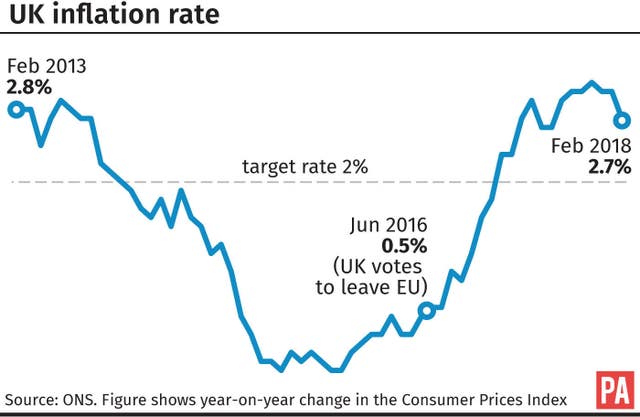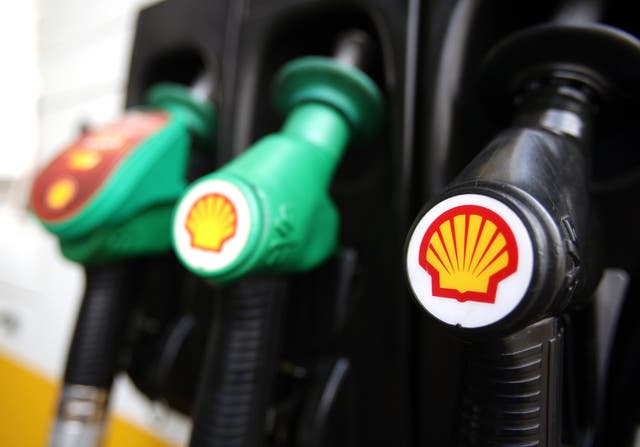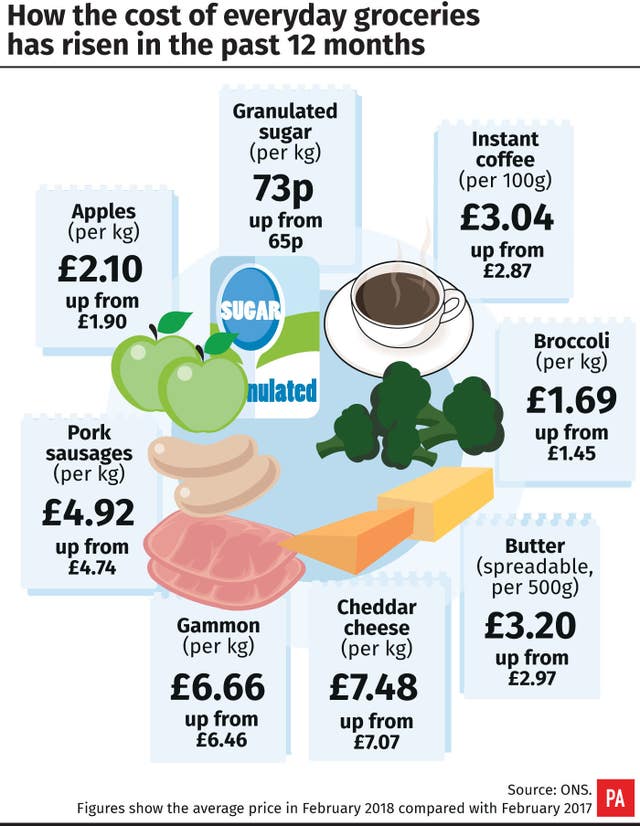Inflation has fallen to its lowest level since July last year, handing some relief to cash-squeezed households as the impact of the Brexit-hit pound starts to disappear.
Figures from the Office for National Statistics (ONS) show the Consumer Prices Index (CPI) cooled to 2.7% last month, down from 3% in January.

The outcome was lower than the 2.8% predicted by economists and marked the first fall in inflation since December 2017.
Sterling’s slide since the Brexit vote has ratcheted up the pressure on household spending power, climbing from 0.6% shortly after the EU referendum result to a near six-year high of 3.1% in November 2017.
UK CPI #inflation fell to 2.7% in February, clearly below the MPC’s 2.9% forecast. Services inflation was its weakest since March (volatile airfares not to blame), confirming Britain still doesn’t have an underlying inflation problem that needs to be cooled with higher rates. pic.twitter.com/HaO87J62K3
— Samuel Tombs (@samueltombs) March 20, 2018
Slower growth from CPI eases the pressure on the Bank of England, which is widely expected to hike interest rates beyond 0.5% in May.
The pound was marginally lower versus the US dollar at 1.402 dollars following the announcement. Against the euro, sterling was up 0.2% to 1.13 euro.
Phil Gooding, ONS head of CPI, said: “A small fall in petrol prices alongside food prices rising more slowly than last year helped pull down inflation, as many of the early 2017 price increases due to the previous depreciation of the pound have started to work through the system.”
Transport prices dragged on the cost of living in February, securing a smaller month-on-month rise of 0.5% in contrast to a 1.2% jump last year.
Petrol prices dropped by 0.2p per litre to 120.8p per litre on the month, while diesel slipped by 0.1p per litre to 124.4p per litre.

Food prices were also applying downward pressure, lifting 0.1% between January and February in contrast to a 0.8% rise the year before.
The fall in food price growth was partly down to a shortage of salad and vegetables last year when bad weather hit crops in southern Mediterranean countries, the ONS said.
The main upward pressure on the cost of living came from clothing and footwear prices, which rose by 1.7% on the month – compared to 1.2% in 2017 – as women’s shoes became more expensive.
Economists and the Bank believe inflation’s upward march has run its course and will start to unwind in 2018.
The Bank is expected to keep interest rates on hold at 0.5% on Thursday, but the meeting will be watched closely amid expectations over another hike in May.

Governor Mark Carney has already warned borrowers that rates will need to rise “somewhat earlier and by a somewhat greater degree” to get inflation back to the Bank’s 2% target after stronger-than-expected economic growth.
The Office for Budget Responsibility (OBR) hiked its outlook for economic growth this year to 1.5% from 1.4% in its Spring Statement forecasts.
Mel Stride, financial secretary to the Treasury, said the Government knew families were feeling “the cost of living at the end of every working week”.
A drop in UK inflation to 2.7% and rising wages means the real pay squeeze is coming to an end (see chart). Households are already feeling less gloomy https://t.co/rXyiXxQIucpic.twitter.com/3Up1xRxybb
— Chris Williamson (@WilliamsonChris) March 20, 2018
He said: “From next month a typical taxpayer will pay £1,000 less income tax than in 2010. And we are increasing the National Living Wage, which is already helping the lowest earners see their pay rise by almost 7% above inflation.”
The Retail Prices Index (RPI), a separate measure of inflation, was 3.6% in February, down from 4% in January
The Consumer Prices Index including owner-occupiers’ housing costs (CPIH) – the ONS’ preferred measure of inflation – was 2.5% last month , easing from 2.7% the month before.
Andrew Sentance, senior economic adviser at PwC, said it was “not a surprise” that inflation was falling back and there was “little reason” for the Bank to hold back from hiking rates.
He said: “The UK recovery is now nearly nine years old, and yet our official interest rate is exactly where it was nine years ago.
“A further interest rate rise would be justified this spring – which would show that the UK is following the lead of the US Federal Reserve in embarking on a policy of gradual and careful interest rate rises.”